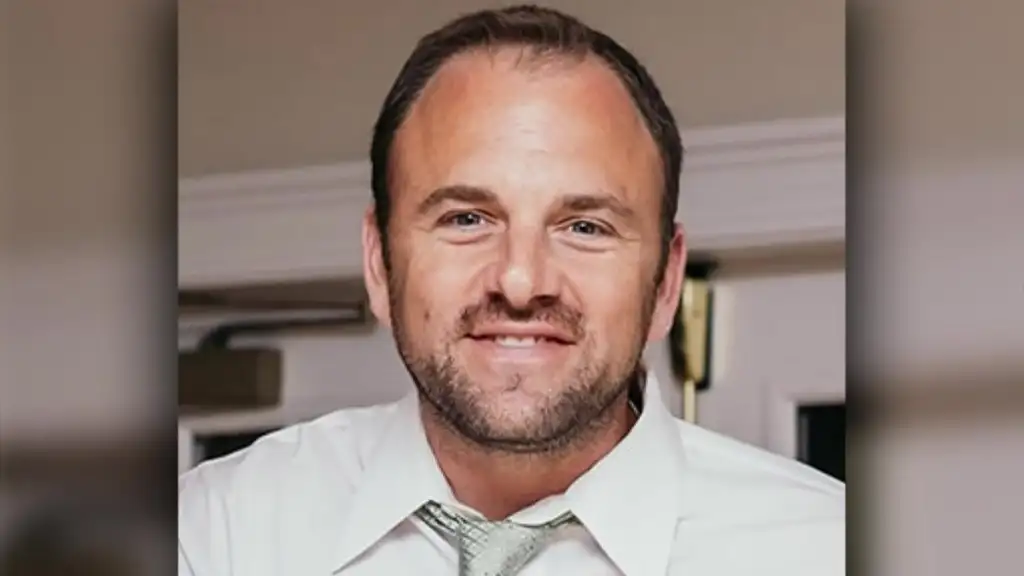This Isn’t Just About Karen Read
The Karen Read trial isn’t just about guilt or innocence. It’s about what happens when power protects its own—and the truth gets buried beneath it.

It’s about all of us, and what can happen when justice is bent behind closed doors.
Imagine you're out late one night and happen to stop at a convenience store just to use the restroom.
A crime is committed—maybe a robbery, maybe a murder. It makes the news. Maybe even national headlines.
The local authorities are under pressure to solve the case quickly.
You had nothing to do with it, but the circumstantial evidence piles up against you:
You were wearing clothes similar to the suspect on surveillance footage.
Your body type matches what a witness thought they saw.
You tossed a piece of gum into the ashtray outside the door.
Maybe your fingerprint is found on the door handle.
Now imagine the person who actually committed the crime is the son of your state's governor—who just so happens to be locked in a tight race for U.S. Senate.
If the real story gets out, his campaign—and career—are finished.
Suddenly, you hear a knock at your door. It's the cops... and they are here to arrest you!
You would like to think the truth is on your side. You would like to think justice is on your side.
You would be wrong.
You better have a damn good lawyer—or you’ll be holding someone’s pocket for the next twenty years in a place where names don’t matter, only numbers.
Like many in New England, I’ve been transfixed by the Karen Read retrial.
Now in its eighth week, all signs point to the jury receiving the case in the coming days.
For those unfamiliar: Karen Read is accused of running over her boyfriend, Boston police officer John O’Keefe, with her Lexus SUV around 12:32 a.m. on January 29, 2022—then leaving him to die in a snowstorm, facedown on a Canton curb.

O'Keefe's body was found almost six hours later by Read after she called a couple of friends in a panic when she realized he hadn't come home. Together, they drove to the last place she’d seen him: 34 Fairview Road, a home owned by another Boston police officer.
Despite poor visibility from the blizzard, both women testified that Read immediately pointed out O’Keefe’s body near a flagpole on the snowy front lawn. They said they couldn’t see anything at first, but Read saw the body right away and told them to stop the car.
She got out of the car and made a beeline to O'Keefe's body.
According to their testimony, Read was hysterical when first responders arrived—and repeated three times:
“I hit him.”
Read’s SUV was impounded later that same day.
It had a broken right taillight—a detail that would become a cornerstone of the case.
Six days later on February 4, the first fragments matching that taillight were discovered near where O’Keefe’s body had been found.
Six days!
Another week later, several more fragments were mysteriously "found."
Read hired defense attorney Alan Jackson, best known for representing actor Kevin Spacey in a high-profile sexual assault case on Nantucket just a few years earlier.
Her defense began to take shape around a totally different theory.
They argue that O’Keefe entered the home at 34 Fairview Avenue—while Read waited outside in her SUV. When he didn’t come back out after several minutes, she grew irritated and drove off.

According to the defense, something happened inside that house. The burden of proof is not on them to prove what.
The home belonged to Brian Albert, a fellow Boston police officer. That night, a party was underway. Among those present: several officers, friends, and Brian Higgins, a federal agent with the Bureau of Alcohol, Tobacco, Firearms, and Explosives (ATF).
The Albert family’s German Shepherd, Chloe, was also in the house that night—and in my view, she’s an integral piece of this puzzle.
Chloe wasn’t known for being friendly with strangers.
Just weeks earlier, Brian Higgins had exchanged flirtatious, suggestive texts with Read. That night, a small group—including Read, O’Keefe, the Albert family, and Higgins—had been out bar hopping before deciding to take the after-party back to 34 Fairview.
Brian Higgins reads flirtatious texts he exchanged with Karen Read.
Could Higgins have been jealous—watching O’Keefe and Read cozy up throughout the night?
Could he have set the stage for a confrontation at the Albert home?
What if O’Keefe walked into that house and Chloe—agitated by strangers and noise—lunged at him?
What if, in trying to fend her off, he stumbled—maybe down a staircase—and struck his head?
O’Keefe was later found with what looked like scratches or bite marks along his right arm.
In autopsy photos, it resembles he may have been in a defensive posture—like someone trying to protect himself from someone, or something, attacking him.
And what about Brian Albert? He is a cop and a first responder.
A body was found in his front yard.
Police cars. Flashing lights. Chaos.
And yet—he never got out of bed. Never went outside.
Meanwhile, Brian Higgins returned to the Canton Police Department around 1:30 a.m. and entered his office. Why? No one really knows.
Around that same time, a series of late-night calls took place between Higgins and Albert.
They’ve since chalked them up to “butt dials.”
At 2:27 a.m., family friend Jennifer McCabe typed a troubling phrase into her phone:
“Hos [sic] long to die in cold?”
The search was made hours before O’Keefe’s body was officially discovered.
McCabe later claimed that Read had asked her to Google it in a panic after they found him—but the phone data tells a different story.
That timestamp shows 2:27 a.m. and that it was deleted by the user.
Why would someone be searching that... before a body was found? And then why would they delete the search?
There are just too many things that don’t sit right.
Brian Higgins dumped his SIM card and phone at a military base on Cape Cod—in two separate dumpsters.
Brian Albert swapped out his phone the day before a court order was issued to preserve his data.
And then there’s Chloe.
The Albert family dog for seven years—gone.
Rehomed just four months after O’Keefe’s death.
Renamed “Cora.” Sent to Vermont.
Shortly after that, the Alberts sold their home of nearly 50 years.
It's just too many loose ends. Too many loose threads. All tied to the same house… the same night… many of the people involved cops.
Then there’s Michael Proctor, the Massachusetts State Police trooper who led the initial investigation.
On the very first night of the case, Proctor was texting a group chat of his high school buddies—not about evidence, not about chain of custody, but about Karen Read’s looks.
“She’s a babe.”
“No nudes so far.”
“Nope—homeowner is a Boston cop, too.”
That last line was in response to a friend saying, “I’m sure the owner will get some s**t.”
Michael Proctor reads the texts that ultimately will get him fired from the Massachusetts State Police.
Proctor had his hands in nearly every stage of the investigation.
He was there when the SUV was taken to the Canton Police “sallyport”—a secure garage.
The defense believes that’s where the pieces of Read’s broken taillight may have been procured.
In March 2025, Proctor was fired from the Massachusetts State Police over these messages.
He’s been noticeably absent from the retrial—not mentioned in the prosecution's opening statement and not called up to the stand (as he was, prominently, in the first trial).
And yet, his fingerprints are all over this case… even if the jury hasn't seen his face.
And that brings me to why I’m writing this.
I’m not here to scream “Free Karen Read.”
I’m here to say: Stop injustice. Stop corruption.
This case should scare all of us. Because any one of us could be in her place.
I’m not saying she is innocent. That’s what makes this case so compelling—on some days, you’re convinced she’s being framed. On others, you wonder if maybe she did do it.
There are valid arguments on both sides.
But what pushed me to write this wasn’t the whodunit aspect of it.
This isn't a future Netflix special to me–actually, one has already been done. An individual is dead. Another person's life is on the line. And, some person, or persons, may be getting away with a crime.
And who is deciding these things? That's the issue I am interested (and worried) about.
I’ve followed this case from the beginning. And what I’ve seen from the prosecution—or maybe more accurately, the persecution—
has left me concerned.
Monday was the final straw. I just had to write about how unjust this case has been.
Prosecutor Hank Brennan was cross-examining Daniel Wolfe, an articulate and credible expert in accident reconstruction for the defense.
Wolfe had testified that if O’Keefe—or anyone—had been struck by a vehicle reversing at 24 mph, their clothing would show clear signs of road rash.
That’s when Brennan tried to stage his big moment.
He reached behind Wolfe and pulled out the sweatshirt O’Keefe was wearing the night he died.
He pointed to holes in the back of the fabric and asked Wolfe if he was aware of “this damage.”
Wolfe looked surprised.
He kept glancing over his shoulder at the sweatshirt.
“It wouldn’t matter,” he said.
“Those holes aren’t consistent with road rash.”
Here’s the kicker: Those holes? They weren’t there the night O’Keefe was found.
They were cut out later by a medical examiner—with scissors—for lab testing.
Brennan knew this.
He showed the sweatshirt anyway. He presented it as something it wasn’t.
He tried to mislead the jury—on purpose.
The defense immediately moved for a mistrial.
Defense attorney Robert Alessi, for a second time, calls for a mistrial due to prosecution's misconduct.
Attorney Robert Alessi didn’t mince words.
“This was intentional,” he told the judge.
“It is a matter of such significance, such misconduct, that it merits a mistrial—with prejudice.”
He pointed out that photos of the sweatshirt’s back were conveniently missing from the prosecution’s evidence packet—even though every other angle had been presented in court.
Then he said what needed to be said:
“Ms. Read is entitled—like every other defendant in this Commonwealth—to a fair trial.”
“The prosecution is supposed to be held to a higher standard. To do justice. To create a fair trial. This is the antithesis of that.”
And he’s right.
And it wasn’t just the sweatshirt stunt.
Earlier, Brennan defied the court’s ruling and brought up the absence of dog DNA—despite being explicitly told not to.
Weeks before that, he quietly tried to revise the alleged timeline of the incident by one minute to make it fit the state’s narrative.
The witness tied to that revision? Shanon Burgess, who testified for the prosecution—but left out the part where he’d faked a college degree on his résumé.
The defense uncovered it. Burgess admitted it on the stand, but not before trying to quietly delete his LinkedIn profile page.
Shanon Burgess discussing his education, or lack thereof.
Still, Brennan chose to not call Brian Albert. Or Brian Higgins. Or Michael Proctor.
Instead, he put Sgt. Yuriy Bukhenik on the stand—a man who struggled to answer basic questions. He couldn’t confirm if the sneaker he showed came from the hospital or the crime scene. He wasn’t sure if it was a left or right shoe.
The tread didn't even match the one in photos.
Then came Officer Kelly Dever. Once a Canton cop, now with Boston PD.
She originally told investigators she saw Higgins and another officer lingering near Read’s SUV in the police station sallyport for a “wildly long time” that first night.
Later, she changed her story.
She claims it was her mistake. The defense says she was pressured to recant.
And maybe she was. Because before her testimony, she had a private meeting with Boston Police Commissioner Michael Cox—who, the defense claims, told her to “do the right thing.”
I could go on.
But at some point, the pattern speaks for itself.
This is what the police call the Blue Wall of Silence. It is a code where men in blue protect each other at all costs, at every level.
I suspect something happened inside that house.
I’m not saying it was murder. I think it was an accident—horseplay, a dog attack, a fall down the stairs. Maybe someone panicked. Maybe they all did.
But what’s clear is this:
They’re covering up something—and they’re doing it for someone. And in the process, they’re sacrificing an innocent person to protect themselves.
We trust people in power to do the right thing. Not the kind of “right thing” that is whispered behind closed doors in a commissioner’s office. Not the kind of "right thing" that make people lie and tamper evidence. Not the kind of “right thing” that puts innocent people on trial. Not the kind of "right thing" that puts innocent people in jail for the rest of their lives.
We expect better from those in authority:
From our presidents.
From our legislators.
From our police.
From our clergy.
From our teachers.
From our parents.
As Robert Alessi said in court:
“The prosecution is supposed to be held to a higher standard. To do justice. To create a fair trial.”
This has not been a fair trial.
And the people we hold to a higher standard are not even trying to meet that standard. They don't care about that standard.
And that should keep every one of us up at night.
